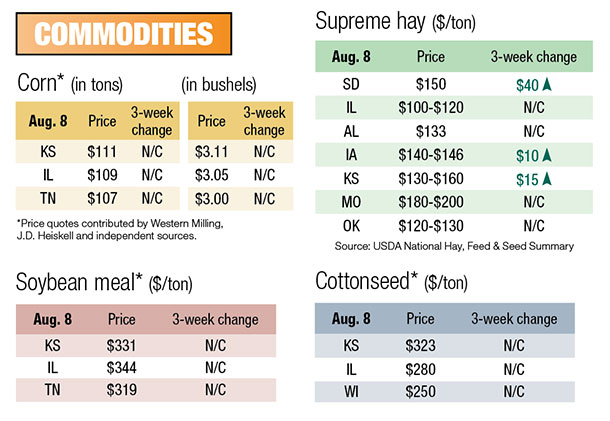A good Corn Belt harvest may help prop up the calf market and maintain favorable feed prices for fall and winter supplementation.
Spring calving
For those producers in the midst of an extensive drought, immediate nutritional needs are what may concern you most, but buying commodities for the winter is also a big priority. This will ensure that supplies are available as needed. If you haven’t early weaned, remember to visit with your veterinarian about deworming strategies.

White-paste dewormers may be a good fit for growing calves, and some pour-on dewormers are a good option to help with short-term horn fly issues. Parasite control is oftentimes a great return on investment come sale day. Culling is often obvious in drought situations. However, every herd is different, and it may be that too many females are slipping late into the breeding season.
Producers who typically do not pregnancy check may want to reconsider this year.
Fall calving
In August, preparation for calving was high priority. Now heavy springing heifers are dependent on good management for clean pastures and a watchful eye two to three times daily. Heifers and cows alike will require 10 to 15 percent greater feed requirements during the final 30 to 45 days prior to calving. This is roughly 1 pound of extra total digestible nutrients per day. This prepartum period has a strong impact on future conception rates.
Pastures typically begin to struggle in September. Those in the central portion of the region have struggled since early summer. With potentially limited forage availability, byproducts and commodities are a necessity to ensure heifers and cows alike stay above a body condition score of 4.
Work with your extension agent or nutritionist to ensure nutritional needs are met. The number of days for uterine involution and rebreeding is approximately 85 days for mature cows and 115 days for heifers.
Proper nutritional status is of paramount importance to ensure next year’s calf crop comes on time. There is long-standing evidence showing 20 to 30 percent higher conception rates for cattle in a body condition score of 5 versus a body condition score of 4. ![]()

-
Jason Duggin
- University of Georgia
- Beef Extension Specialist
- Email Jason Duggin







